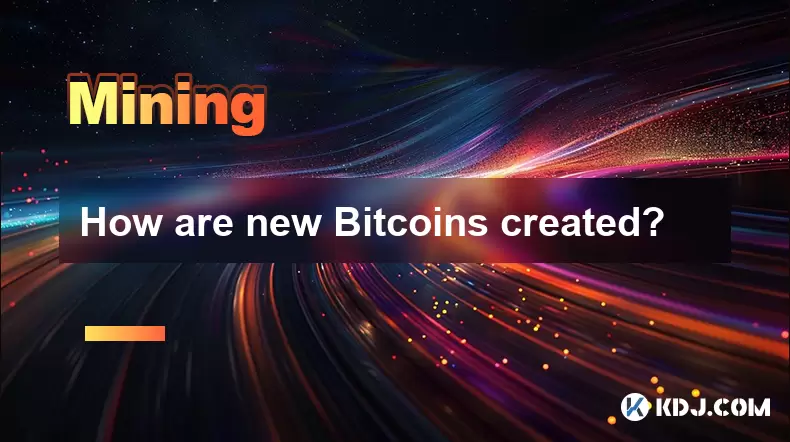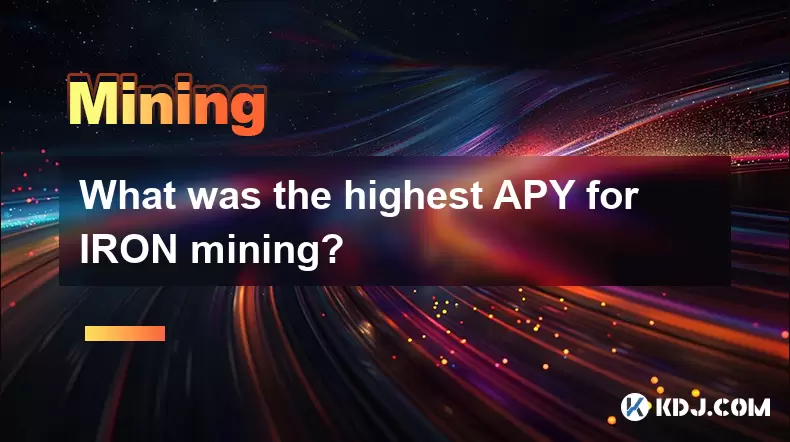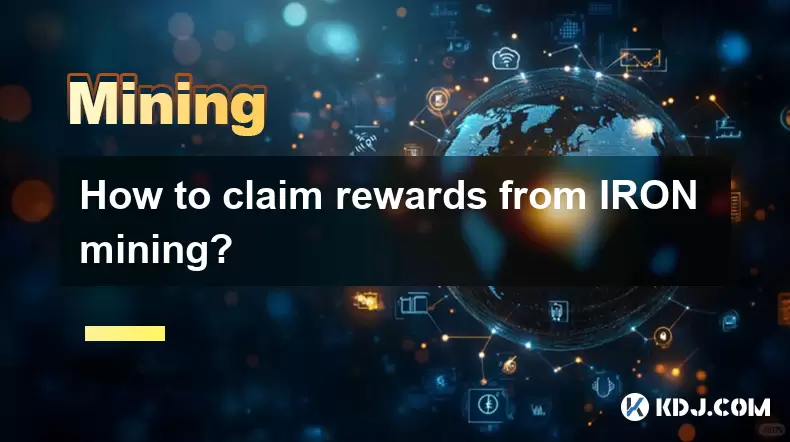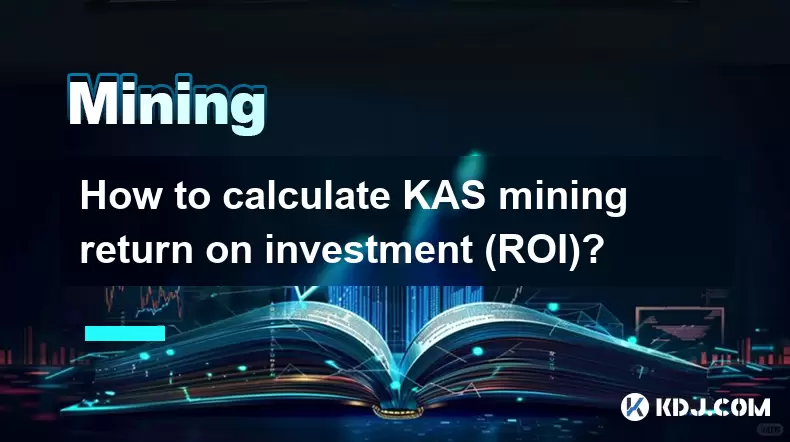-
 Bitcoin
Bitcoin $118900
1.66% -
 Ethereum
Ethereum $3735
1.35% -
 XRP
XRP $3.506
0.71% -
 Tether USDt
Tether USDt $1.000
-0.01% -
 BNB
BNB $799.4
5.78% -
 Solana
Solana $202.0
1.87% -
 USDC
USDC $0.9999
0.00% -
 Dogecoin
Dogecoin $0.2661
1.89% -
 Cardano
Cardano $0.8877
1.59% -
 TRON
TRON $0.3173
2.45% -
 Hyperliquid
Hyperliquid $45.00
2.59% -
 Stellar
Stellar $0.4723
3.40% -
 Sui
Sui $3.970
1.32% -
 Chainlink
Chainlink $19.67
1.94% -
 Hedera
Hedera $0.2710
1.99% -
 Avalanche
Avalanche $25.74
-0.01% -
 Bitcoin Cash
Bitcoin Cash $528.1
1.98% -
 Litecoin
Litecoin $120.1
3.57% -
 Shiba Inu
Shiba Inu $0.00001525
1.26% -
 UNUS SED LEO
UNUS SED LEO $8.989
-0.01% -
 Toncoin
Toncoin $3.304
1.74% -
 Polkadot
Polkadot $4.531
3.38% -
 Uniswap
Uniswap $10.74
2.51% -
 Ethena USDe
Ethena USDe $1.001
0.00% -
 Monero
Monero $325.5
2.44% -
 Pepe
Pepe $0.00001413
1.31% -
 Bitget Token
Bitget Token $4.860
0.85% -
 Dai
Dai $0.9999
0.01% -
 Aave
Aave $307.3
-2.07% -
 Bittensor
Bittensor $448.8
2.91%
How are new Bitcoins created?
Bitcoin mining secures the network by solving cryptographic puzzles using SHA-256, with miners rewarded in BTC and fees; rewards halve every ~4 years, limiting supply to 21 million.
Jul 23, 2025 at 10:42 am

What is Bitcoin Mining?
New Bitcoins are created through a process known as mining, which is the backbone of the Bitcoin network’s security and transaction validation. Mining involves powerful computers solving complex cryptographic puzzles to validate blocks of transactions. Each time a miner successfully solves a puzzle, they add a new block to the Bitcoin blockchain, a public ledger that records all transactions. As a reward for this work, the miner receives newly minted Bitcoins along with transaction fees from the users whose transactions are included in the block. This process ensures that no central authority controls the issuance of new coins, maintaining Bitcoin’s decentralized nature.
The cryptographic puzzle miners solve is based on the SHA-256 algorithm, a one-way hash function that makes it extremely difficult to reverse-engineer the input from the output. Miners repeatedly guess a value called a nonce until they find one that, when combined with the block’s data, produces a hash below a specific target value set by the network. This process is known as proof of work and requires substantial computational power and energy.
How Does the Block Reward Work?
The block reward is the amount of new Bitcoin a miner receives for successfully mining a block. This reward is hardcoded into the Bitcoin protocol and is subject to a mechanism called halving. Approximately every four years, or every 210,000 blocks, the block reward is cut in half. The initial reward in 2009 was 50 BTC per block. After the first halving in 2012, it dropped to 25 BTC; in 2016, to 12.5 BTC; in 2020, to 6.25 BTC; and in 2024, it was reduced to 3.125 BTC. This controlled issuance ensures that the total supply of Bitcoin will never exceed 21 million coins, making it a deflationary asset.
The halving process is crucial because it reduces the rate at which new Bitcoins enter circulation. This scarcity is a core feature of Bitcoin’s economic model and mimics the extraction of finite resources like gold. The next halving is expected around 2028, after which the reward will drop to 1.5625 BTC per block. Over time, as the block reward diminishes, transaction fees are expected to become a more significant incentive for miners.
What Equipment is Used for Bitcoin Mining?
Bitcoin mining has evolved significantly since its inception. Early miners used standard CPU processors, but as competition increased, miners shifted to more powerful hardware. Today, mining is dominated by ASICs (Application-Specific Integrated Circuits), which are specialized machines designed solely for mining Bitcoin. These devices are far more efficient than general-purpose hardware like GPUs or CPUs.
- Purchase a Bitcoin ASIC miner from reputable manufacturers such as Bitmain, MicroBT, or Canaan.
- Set up a stable internet connection and a secure location with proper ventilation, as ASICs generate significant heat.
- Connect the miner to a power supply unit (PSU) that meets its voltage and wattage requirements.
- Configure the miner using its web interface or software, entering the IP address provided by the manufacturer.
- Input mining pool details, including the pool URL, port, username, and password, to begin contributing hash power.
Mining at home is possible, but many miners join mining pools to combine their computational power and increase the chances of earning rewards. Pools distribute the block reward proportionally based on each miner’s contributed work.
How Are Transactions Validated During Mining?
Before a new block is mined, transactions are collected from the mempool, a holding area for unconfirmed transactions. Miners select which transactions to include in the next block, typically prioritizing those with higher transaction fees to maximize profit. Once selected, these transactions are hashed together into a structure called a Merkle tree, which produces a single root hash representing all transactions in the block.
The miner then combines this Merkle root with the previous block’s hash and the current timestamp to form the block header. The SHA-256 algorithm is applied twice to this header, and the miner adjusts the nonce repeatedly until the resulting hash meets the network’s difficulty target. This target is adjusted every 2016 blocks (about every two weeks) to ensure that a new block is added approximately every 10 minutes, regardless of how much total hash power is on the network.
Once a valid hash is found, the miner broadcasts the new block to the network. Other nodes verify the block’s validity by checking the proof of work, transaction signatures, and adherence to consensus rules. If valid, the block is added to each node’s copy of the blockchain, and the miner receives the block reward plus fees.
What Prevents Inflation in Bitcoin?
Bitcoin’s supply is strictly controlled by its protocol to prevent inflation. The 21 million coin cap is enforced through code, and every node on the network validates this rule. If a miner attempts to create more than the allowed block reward, the block will be rejected by other nodes, making the invalid reward worthless.
The halving mechanism ensures that the rate of new Bitcoin creation slows over time. After approximately 64 halvings, the block reward will approach zero, with the last Bitcoin expected to be mined around the year 2140. Beyond that point, miners will rely entirely on transaction fees for income. This built-in scarcity is a fundamental aspect of Bitcoin’s value proposition and distinguishes it from fiat currencies, which central banks can print indefinitely.
Frequently Asked Questions
Can anyone mine Bitcoin today?
Yes, technically anyone can mine Bitcoin, but profitability depends on access to low-cost electricity, efficient hardware, and participation in a mining pool. Solo mining with consumer-grade equipment is unlikely to yield rewards due to the immense competition and network difficulty.
What happens if two miners find a block at the same time?
When two miners broadcast valid blocks simultaneously, the network temporarily splits. Miners continue building on whichever block they receive first. The chain that grows longer becomes the accepted version, and the other block becomes orphaned. Transactions in the orphaned block return to the mempool for inclusion in future blocks.
Is Bitcoin mining legal everywhere?
No, Bitcoin mining legality varies by country. It is permitted in most Western nations, including the United States, Canada, and Germany, but banned or restricted in countries like China, Egypt, and Algeria due to concerns over energy use or financial control.
How does the network adjust mining difficulty?
The Bitcoin network recalculates the difficulty target every 2016 blocks based on the time it took to mine the previous set. If blocks were mined faster than 10 minutes on average, difficulty increases; if slower, it decreases. This ensures consistent block times despite fluctuating hash power.
Disclaimer:info@kdj.com
The information provided is not trading advice. kdj.com does not assume any responsibility for any investments made based on the information provided in this article. Cryptocurrencies are highly volatile and it is highly recommended that you invest with caution after thorough research!
If you believe that the content used on this website infringes your copyright, please contact us immediately (info@kdj.com) and we will delete it promptly.
- Binance, Leverage, and Perpetual Contracts: A Trader's Deep Dive
- 2025-07-23 16:50:12
- Cardano, Hoskinson, and the ADA Rally: What's Driving the Surge?
- 2025-07-23 17:30:13
- Bitcoin Profit-Taking, Whale Behavior, and Technical Analysis: A July 2025 Snapshot
- 2025-07-23 17:30:13
- Tom Lee's Bold Bitcoin Prediction: $250K by '25 or $3M Long Term?
- 2025-07-23 16:30:12
- VeChain (VET) Price Prediction: Bullish Breakout or Short-Term Skepticism?
- 2025-07-23 16:50:12
- Jackbit Casino: Your Ticket to Crypto Bonuses and Free Spins in 2025
- 2025-07-23 16:30:12
Related knowledge

What was the highest APY for IRON mining?
Jul 23,2025 at 05:14am
Understanding IRON Token and Its Mining MechanismThe IRON token is a stablecoin that operates within the Iron Finance ecosystem, primarily on blockcha...

What is impermanent loss in IRON pools?
Jul 23,2025 at 09:00am
Understanding Impermanent Loss in the Context of IRON PoolsImpermanent loss is a phenomenon that affects liquidity providers in decentralized finance ...

How to claim rewards from IRON mining?
Jul 23,2025 at 02:21pm
Understanding IRON Mining and Reward MechanismsIRON Finance operated as a decentralized finance (DeFi) protocol on the Polygon and Binance Smart Chain...

How to calculate KAS mining return on investment (ROI)?
Jul 23,2025 at 10:14am
Understanding KAS Mining and ROI BasicsCalculating the return on investment (ROI) for KAS (Kaspa) mining requires a clear understanding of both the mi...

How to join a Kaspa mining pool?
Jul 23,2025 at 08:36am
Understanding Kaspa and Its Mining MechanismKaspa is a high-performance blockchain that utilizes a unique blockDAG (Directed Acyclic Graph) structure,...

What happens when all Kaspa is mined?
Jul 23,2025 at 05:57pm
Understanding the Kaspa Mining MechanismKaspa operates on a blockchain protocol that utilizes the GHOSTDAG consensus mechanism, enabling high-speed bl...

What was the highest APY for IRON mining?
Jul 23,2025 at 05:14am
Understanding IRON Token and Its Mining MechanismThe IRON token is a stablecoin that operates within the Iron Finance ecosystem, primarily on blockcha...

What is impermanent loss in IRON pools?
Jul 23,2025 at 09:00am
Understanding Impermanent Loss in the Context of IRON PoolsImpermanent loss is a phenomenon that affects liquidity providers in decentralized finance ...

How to claim rewards from IRON mining?
Jul 23,2025 at 02:21pm
Understanding IRON Mining and Reward MechanismsIRON Finance operated as a decentralized finance (DeFi) protocol on the Polygon and Binance Smart Chain...

How to calculate KAS mining return on investment (ROI)?
Jul 23,2025 at 10:14am
Understanding KAS Mining and ROI BasicsCalculating the return on investment (ROI) for KAS (Kaspa) mining requires a clear understanding of both the mi...

How to join a Kaspa mining pool?
Jul 23,2025 at 08:36am
Understanding Kaspa and Its Mining MechanismKaspa is a high-performance blockchain that utilizes a unique blockDAG (Directed Acyclic Graph) structure,...

What happens when all Kaspa is mined?
Jul 23,2025 at 05:57pm
Understanding the Kaspa Mining MechanismKaspa operates on a blockchain protocol that utilizes the GHOSTDAG consensus mechanism, enabling high-speed bl...
See all articles

























































































